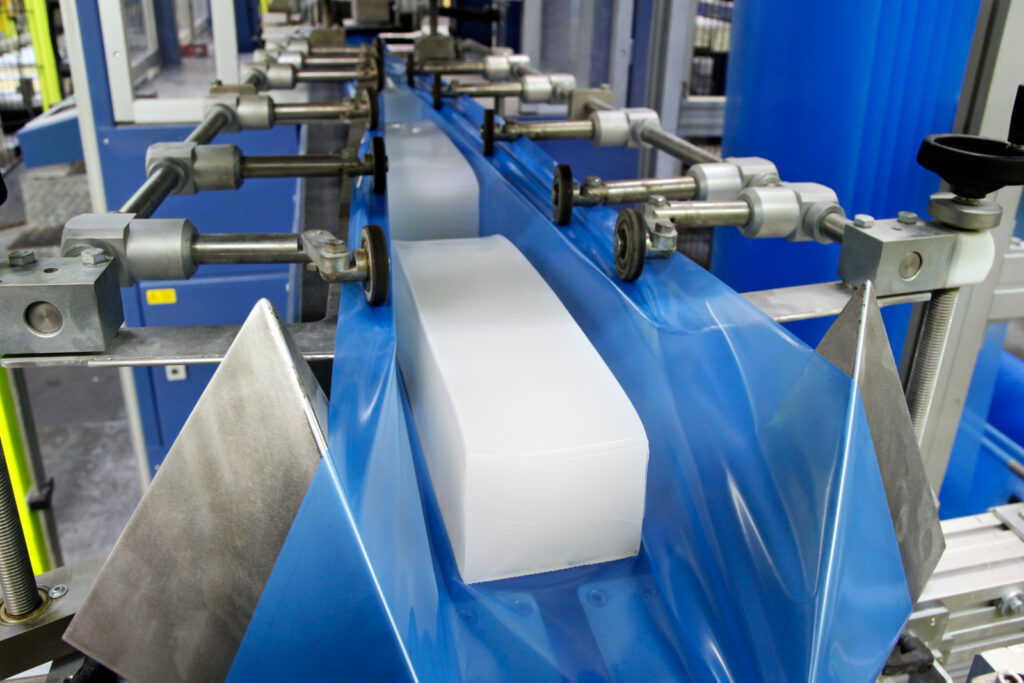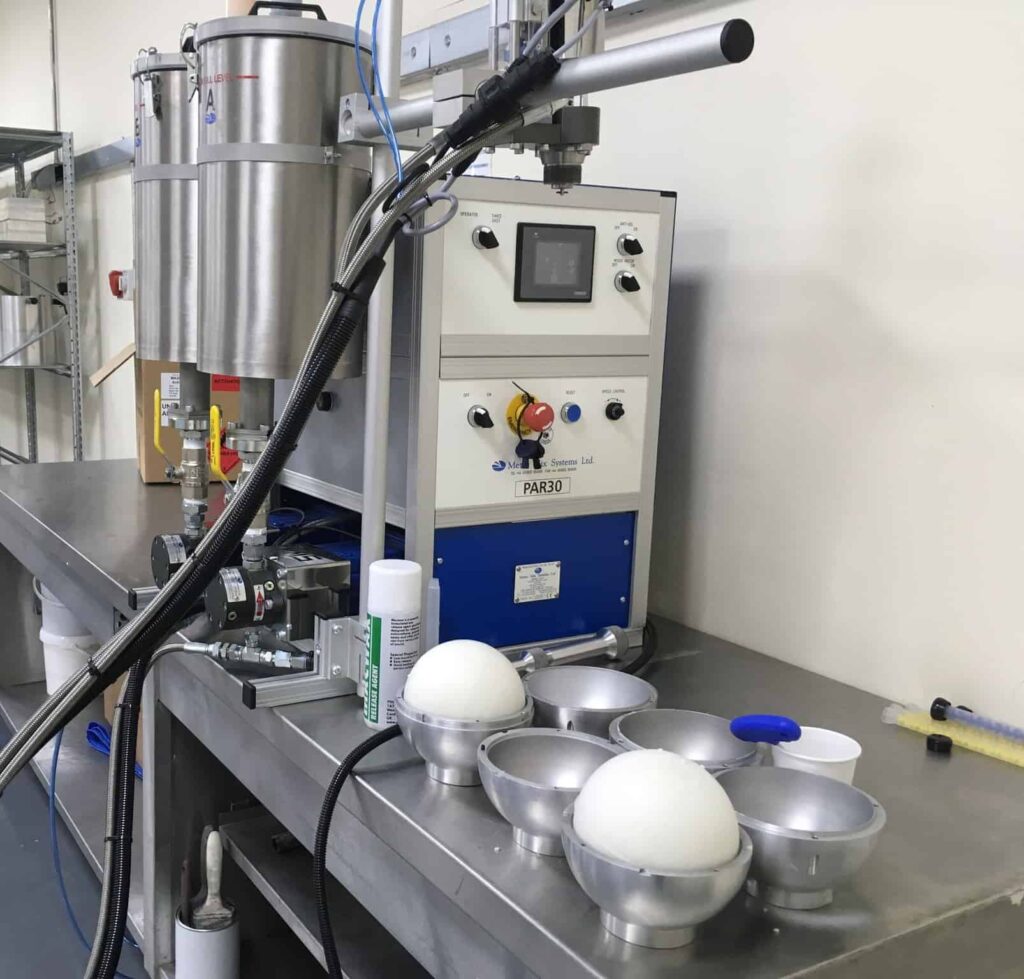Yes, silicone does stick to silicone. It’s like a special glue just for silicone. Silicone is a rubbery material, and when you put two silicone things together, they stick well. This happens because of how silicone is made at a tiny level – the pieces in silicone like each other.
So, if you’re using silicone in a project or fixing something made of silicone, it’s good to know that when you connect two silicone parts, they stay together nicely. This is handy for many things, like kitchen tools and making sure things don’t leak in industries. It’s like silicone has its own built-in way of sticking together!
What is Silicone?

Silicone is a versatile polymer composed of silicon, oxygen, carbon, and hydrogen atoms. This unique combination gives it a rubbery, flexible quality. Unlike other polymers, silicone contains silicon, a natural element derived from sand and quartz.
Silicone’s molecular structure consists of alternating silicon and oxygen atoms, forming a backbone that influences its exceptional properties. This structure imparts durability, heat resistance, and an innate resistance to UV radiation and oxidation.
Silicone finds extensive use across various industries. It is prevalent in medical devices, kitchenware, electronics, construction materials, and automotive components. Its non-toxic nature makes it suitable for kitchen utensils, while its resistance to extreme temperatures and chemicals makes it valuable in manufacturing and healthcare.
Properties of Silicone
Temperature Resistance
Silicone exhibits remarkable stability across a wide temperature range, maintaining its properties in both extreme heat and cold. This quality makes it ideal for applications requiring heat resistance, such as oven mitts and gaskets.
Flexibility and Elasticity
Silicone’s rubber-like flexibility allows it to bend and stretch without losing its shape. This property is crucial in creating durable, long-lasting products like seals, gaskets, and medical implants.
Chemical Inertness
Silicone is chemically inert, meaning it doesn’t react with most substances. This makes it safe for use in medical implants, as it doesn’t interact with bodily fluids or tissues.
Water Repellence
Silicone is naturally hydrophobic, resisting water absorption. This property is advantageous in waterproofing applications, such as sealants and coatings.
Electrical Insulation
Silicone’s insulating properties make it a preferred material in electrical applications, including insulating cables and creating protective coatings for electronic components.
Does Silicone Stick to Silicone?
Yes, silicone does adhere to silicone. The adhesive nature of silicone to itself is a result of its molecular structure and surface properties. When two silicone surfaces come into contact, the molecules in each surface form bonds with one another, creating a strong and durable connection.
Factors Influencing Silicone Adhesion:Surface Cleanliness
For effective adhesion, it is crucial to ensure that the surfaces being joined are clean and free from contaminants. Any dust, grease, or residues can hinder the bonding process, leading to weaker adhesion.
Surface Texture
The texture of the silicone surfaces plays a role in adhesion. Rougher surfaces provide more contact points for the molecules to bond, enhancing the overall adhesion strength.
Temperature
Temperature significantly influences silicone adhesion. Applying silicone adhesive or sealant at the recommended temperature range ensures optimal bonding. Extreme temperatures, either too high or too low, can affect the adhesive properties and result in weaker bonds.
Curing Time
Silicone adhesives typically require a curing or drying period to achieve maximum strength. Following the recommended curing time is essential for ensuring the adhesive has set properly, resulting in a robust bond.
Type of Silicone
Different types of silicone formulations exist, each with specific properties. The choice of silicone type can impact adhesion. Some formulations are designed for high-temperature applications, while others may prioritize flexibility.
Compression and Contact Pressure
Applying proper compression or contact pressure during the bonding process aids in creating a tighter connection between the silicone surfaces. This is particularly important in applications where a strong, reliable bond is critical, such as in gaskets or seals.
How do the chemical properties of silicone influence adhesion?
Silicone is composed of repeating silicon-oxygen (Si-O) bonds, forming a unique linear or branched polymer structure. The nature of these bonds contributes to silicone’s flexibility, allowing the molecules to move and conform to the surface it contacts during adhesion.
The Si-O bonds in silicone give the molecule a polar nature. Polar molecules have regions with different electrical charges, creating a form of electrostatic attraction. When two silicone surfaces approach each other, these polar regions interact, leading to the formation of bonds and promoting adhesion.
Silicone is naturally hydrophobic, meaning it repels water. This property is advantageous in adhesion processes, as it prevents interference from water molecules that could disrupt the bonding. The hydrophobic nature also contributes to silicone’s resistance to environmental factors, enhancing its durability in various applications.
Silicone exhibits a relatively low surface energy, making it less likely to form strong bonds with other materials. However, when two silicone surfaces are in contact, this low surface energy becomes a facilitating factor for adhesion. The weak intermolecular forces allow silicone molecules to easily form bonds with each other.
Silicone maintains its chemical structure and properties over a wide temperature range. This thermal stability is crucial in applications where adhesion needs to withstand temperature variations. The ability of silicone to resist degradation at high temperatures contributes to the longevity of adhesive bonds.
What factors affect silicone-to-silicone adhesion?
Several factors can affect silicone-to-silicone adhesion, influencing the strength and durability of the bond. Here are key factors to consider
Surface Cleanliness
Contaminants like dust, oils, or residues hinder adhesion. Thoroughly clean and prepare the silicone surfaces to ensure optimal bonding.
Surface Texture
The texture of the silicone surfaces matters. Rougher surfaces provide more contact points for molecules to bond, enhancing adhesion strength.
Temperature
Adhesive application and bonding should occur within the recommended temperature range. Extreme temperatures can compromise the adhesive properties and weaken the bond.
Type of Silicone
Different silicone formulations exist, each tailored for specific applications. Choose the right type based on the desired properties, such as flexibility or high-temperature resistance.
Curing Time
Silicone adhesives often require a curing period for optimal strength. Follow recommended curing times to ensure the adhesive sets properly.
Compression and Contact Pressure
Applying adequate compression or contact pressure during bonding promotes a tighter connection between silicone surfaces, enhancing the bond’s strength.
Environmental Conditions
Factors like humidity and exposure to chemicals can impact adhesion. Consider the environment where the silicone-to-silicone bond will exist.
Substrate Pre-treatment
Some applications may benefit from pre-treating the silicone surfaces using primers or other surface modification techniques to enhance adhesion.
Silicone Thickness
Thicker layers of silicone may require longer curing times and can affect the overall bond strength. Consider the application requirements when determining the silicone thickness.
Adhesive Formulation
The specific formulation of the silicone adhesive can influence adhesion. Choose an adhesive designed for silicone-to-silicone bonding and follow the manufacturer’s guidelines.
Aging and Degradation
Over time, environmental factors can impact the adhesive bond. Consider the long-term effects of aging and degradation on the silicone-to-silicone adhesion in the intended application.
What is the best way to glue a two silicone pieces together?

Gluing two silicone pieces together requires careful consideration of several factors to ensure a strong and lasting bond. Here is a step-by-step guide on the best way to glue two silicone pieces together
Materials Needed
- Silicone adhesive or sealant (Ensure it is suitable for the intended application)
- Isopropyl alcohol or a silicone-specific cleaner
- Clean cloth or lint-free wipes
- Clamps or fixtures (if needed)
- Optional: Primer or adhesion promoter (check compatibility with silicone)
Procedure
Surface Preparation
Clean both silicone surfaces thoroughly using isopropyl alcohol or a silicone-specific cleaner to remove any contaminants, oils, or residues. Ensure the surfaces are completely dry before proceeding.
Optional Surface Activation
Depending on the specific adhesive used, you may choose to use a primer or adhesion promoter. Follow the manufacturer’s instructions and ensure compatibility with silicone.
Apply Silicone Adhesive
Dispense the silicone adhesive or sealant onto one of the surfaces. Use a continuous bead or apply as recommended by the product instructions. Be mindful of the quantity to avoid excessive application.
Spreading the Adhesive
Use a spatula, small brush, or the back of a clean spoon to spread the adhesive evenly over the entire surface. Ensure uniform coverage, especially along the edges.
Joining the Surfaces
Carefully bring the two silicone pieces together, aligning them according to your desired configuration. Apply gentle pressure to establish initial contact.
Applying Compression
Use clamps or fixtures, if necessary, to maintain even compression on the bonded area. This helps ensure a tight connection and uniform adhesion. Be cautious not to apply excessive pressure, which might squeeze out excess adhesive.
Clean Excess Adhesive
Wipe away any excess adhesive that may have squeezed out from the edges. Use a clean cloth or lint-free wipes. Take care not to disturb the alignment of the bonded pieces.
Curing Time
Allow the adhesive to cure based on the manufacturer’s recommended time. Ensure a controlled environment during curing, avoiding excessive heat or humidity, which can affect the bonding process.
Post-Curing Inspection
After the curing period, inspect the bond for strength and durability. Ensure that the silicone adhesive has fully set and that the bond meets the desired specifications.
FAQ
How well does silicone stick to silicone?
Silicone adheres exceptionally well to itself due to its unique molecular structure. When two silicone surfaces come into contact, they form strong bonds, creating a reliable and durable connection.
Will 100% silicone stick to 100% silicone?
Yes, 100% silicone will stick effectively to 100% silicone. The compatibility of the materials ensures a robust bond, especially when proper surface preparation and application techniques are followed.
Can you do 2 layers of silicone?
Yes, you can apply multiple layers of silicone. However, for effective bonding, it’s crucial to consider curing time and ensure each layer is applied within the recommended timeframe.
How do you bond silicone together?
To bond silicone, clean the surfaces, apply silicone adhesive evenly, join the pieces, and maintain compression until the adhesive cures. Surface preparation and following product instructions are key.
Will silicone stick things together?
Yes, silicone is an effective adhesive and can securely stick various materials together, making it versatile for applications in construction, electronics, and daily use.
How long does silicone take to dry?
Silicone adhesives typically take 24 hours to fully cure. However, factors like temperature, humidity, and the specific product used can influence the drying time.
Is silicone stronger than glue?
Silicone can be stronger than traditional glue in certain applications. Its flexibility, durability, and resistance to various environmental factors contribute to its strength.
Will silicone cure if wet?
Most silicone adhesives cure even in a wet environment. However, prolonged exposure to water during the curing process may affect the bond strength.
Does silicone go bad?
Silicone sealants and adhesives can have a shelf life. Check the product expiration date, and store it properly to ensure optimal performance over time.
Is silicone bad like plastic?
No, silicone is generally considered safe and has different properties than plastics. It is heat-resistant, non-toxic, and does not release harmful substances when heated.
Is silicone permanent?
While silicone bonds can be strong and durable, they may not be considered permanent. Factors like environmental conditions and usage can influence the longevity of the bond.
Final words
All things considered, yes, silicone does stick to silicone! The molecular magic of silicone makes it bond well with itself, creating strong connections. Remember to clean the surfaces, choose the right silicone type, and follow proper temperature and curing guidelines for the best results.
Whether you’re fixing kitchen tools or working on a project, understanding how silicone sticks together helps ensure durable and reliable bonds. Happy sticking!
